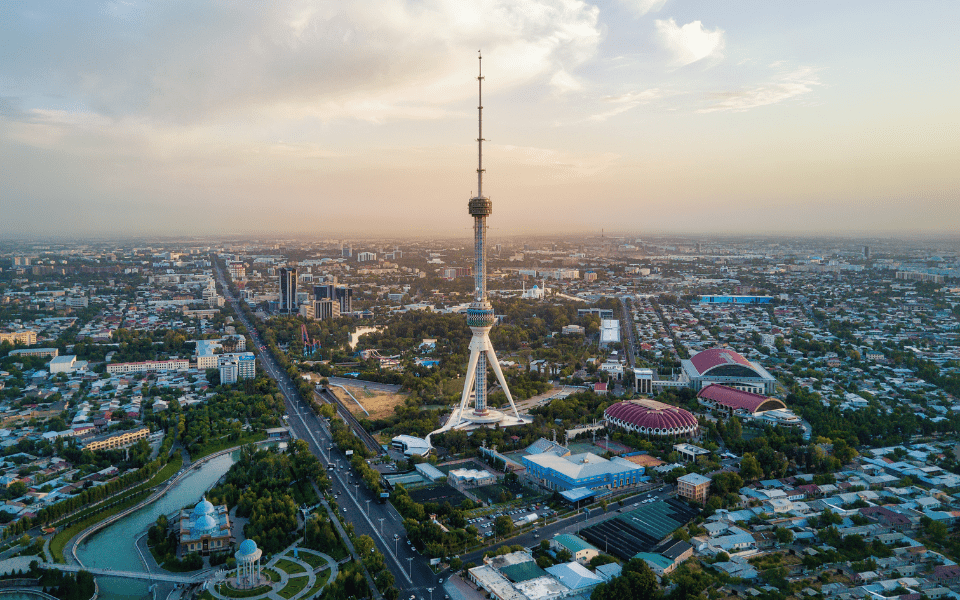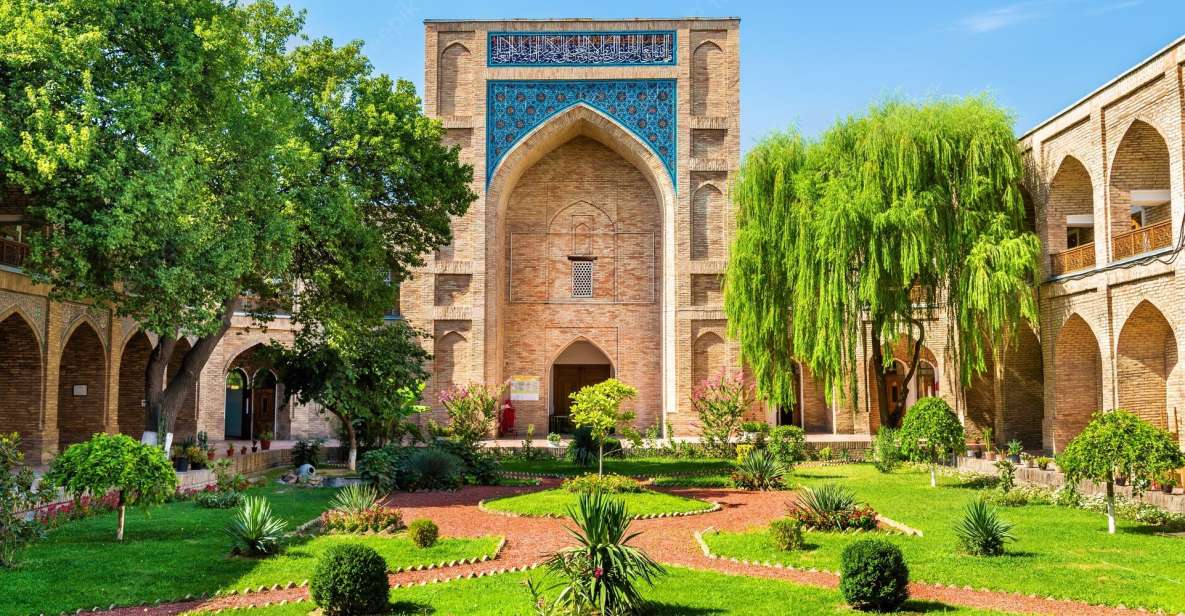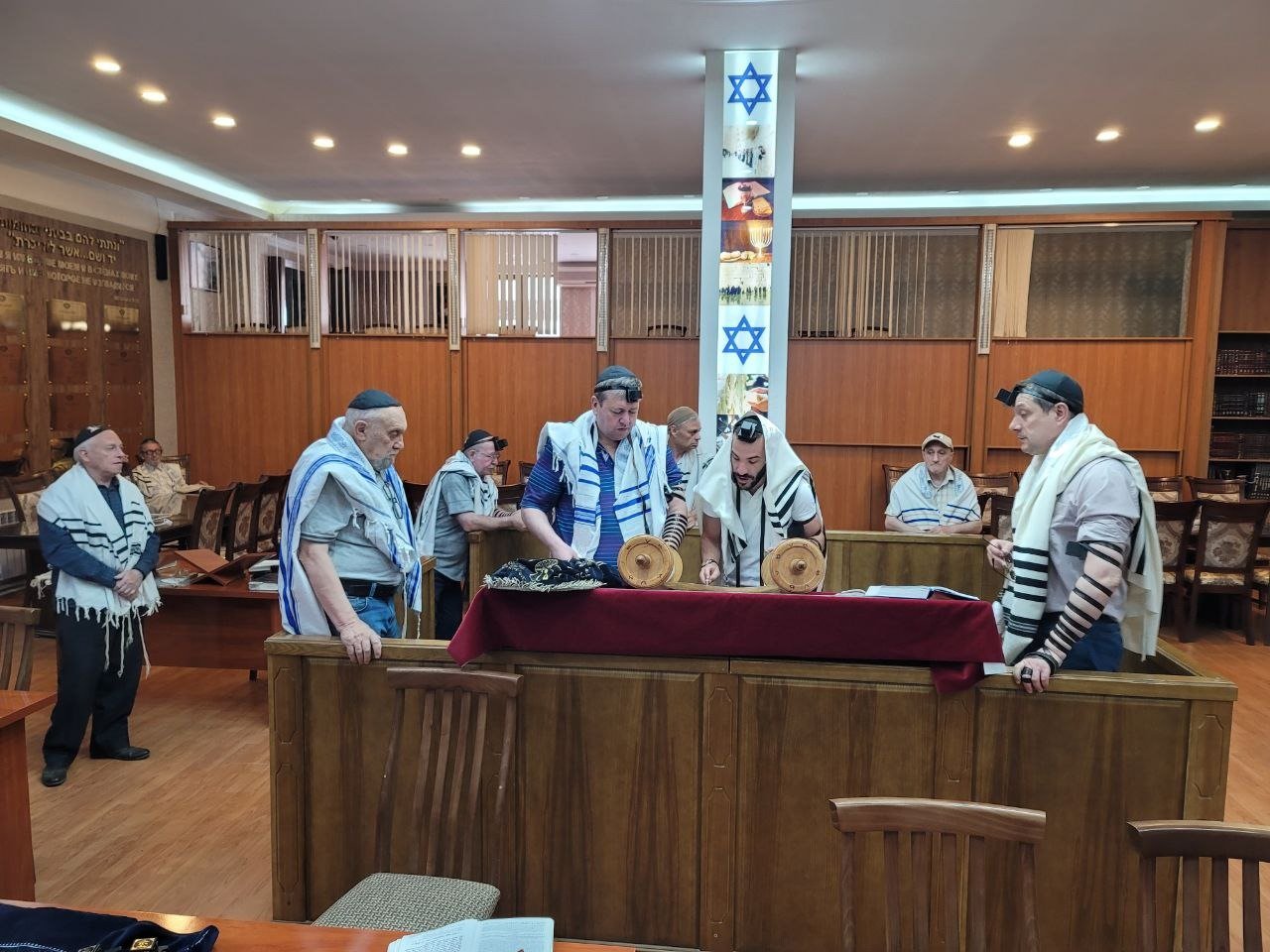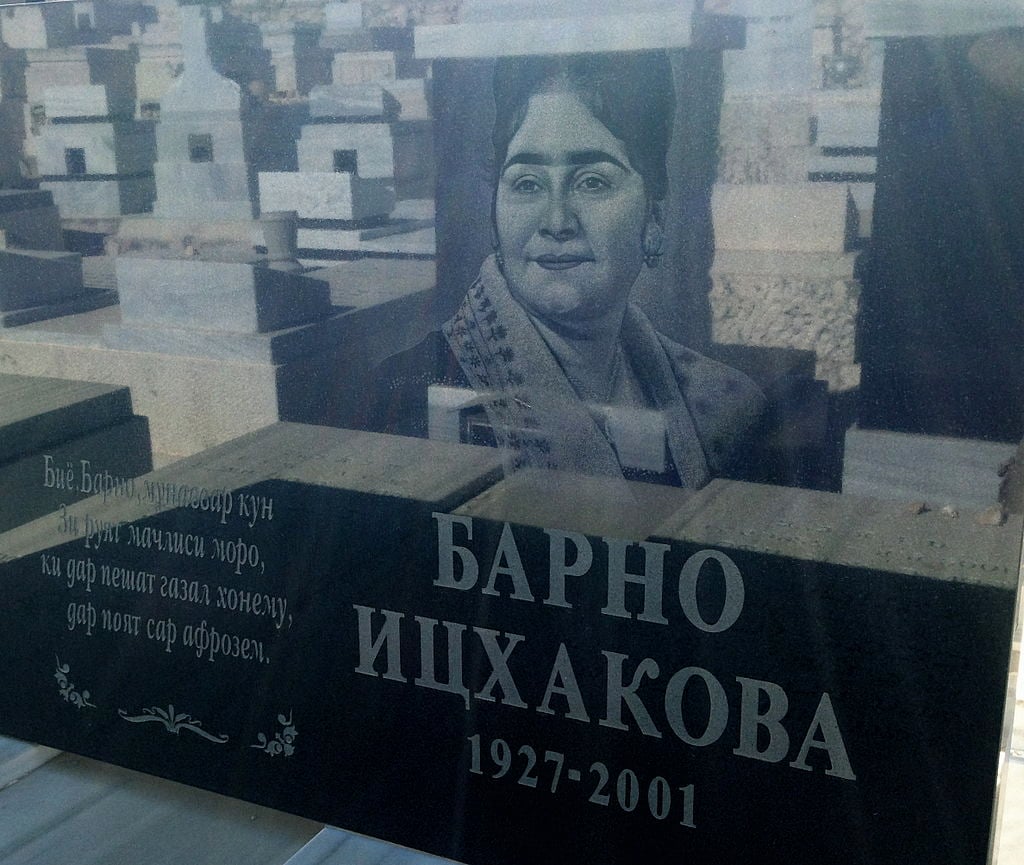Introduction to Jewish Tashkent
Tashkent is the capital city of Uzbekistan, known for its many museums and mix of modern and Soviet-era architecture. Located in the northeastern region of Uzbekistan, near the border with Kazakhstan, it’s the most populous city in Central Asia, with a population of 2,909,500. The name “Tashkent” comes from the Turkic tash and kent, literally translated as “Stone City” or “City of Stones”.

In 1865, the city of Tashkent was conquered by the Russians, and the small community of Bukharan Jews living there at the time saw an improvement in their legal status. This led to a surge of Jews from neighboring Bukhara settling in Tashkent. Despite the Czarist rule prohibiting Jews from European Russia from settling in Tashkent, a small community of Russian Jews who belonged to categories that could settle outside the Pale of Settlement was formed during the latter half of the 19th century.
Jewish Culture and History in Tashkent
Early Jewish Life in Tashkent
In 1897, there were 1,746 Jews in Tashkent, most of whom lived in the city. On the eve of World War I, there were about 3,000 Jews and the city maintained Jewish educational and cultural institutions where Hebrew was the primary language. In addition, a Tajiki-language Zionist newspaper, Raḥamim, was published. With the establishment of the Soviet regime, Jewish cultural and religious institutions were gradually liquidated and the Zionist newspaper was replaced by a communist paper called Bairaki Huriet (“The Flag of Freedom”). During the 1920s and 1930s, Tashkent became one of the centers where active members of the Zionist Organization and pioneering youth movements were exiled. Shortly after, during World War II, Tashkent became one of the most significant absorption centers for refugees from the German-occupied regions. As a result, a large Jewish settlement developed in the town after the war.
Recent and Contemporary Jewish Life in Tashkent
In 1959, 50,445 Jews remained in Tashkent, making up 5.5% of the total population. The majority of them were newly arrived Ashkenazi Jews, making the Bukharan Jews a minority in the community. There was one synagogue for Ashkenazim and two for Bukharans all located within the same compound. The synagogue buildings were all damaged in the 1966 earthquake and though the Bukharan Jews chose to repair their synagogues, the Ashkenazim moved to a new building.
Life became harder for Jews living in Tashkent starting when organized matzo baking became prohibited in 1963. Around this time several Tashkent Jews applied for exit permits to Israel, and after the mass exodus of the 1990s, only a few thousand Jews remained in Tashkent. Though the Jewish community is now small, it has maintained active and welcomes Jews from around the world who come to visit their city.
Iconic Attractions and Events in Tashkent
The Jewish Quarter in Tashkent
The Jewish Quarter of Tashkent is a special place full of history and culture. It is home to some of the oldest synagogues in Central Asia, many of which date back centuries. These places provide insight into the lives of Jewish people throughout Tashkent’s long history, from its origins as an ancient Silk Road city to its modern-day status as a thriving cultural center. The area also features several renowned attractions such as the Great Synagogue, or Choral Synagogue, which was built in 1866 and is one of the largest Jewish houses of worship in Central Asia today. Additionally, visitors can explore other historic sites including cemeteries and monuments dedicated to famous figures associated with the city who have made significant contributions in fields such as literature, art, science and politics.

Midieval Kukeldash Madrasah in Tashkent, Uzbekistan | Attribution: Monticello
The Tero Synagogue
The Tero Synagogue in Tashkent is one of two active Bukharian synagogues. Mr. Arkadiy Isakharov is the chairman of the synagogue who often leads tours of the building and can explain the brief history to guests who wish to learn about the Jewish community of Tashkent. The synagogue’s arc contains numerous Torah Scrolls, several of which survived a fire and others that are more than 250 years old! This synagogue was formed because of the nearby Jewish cemetery, also known as the Textile Cemetery. In Tashkent there are two cemeteries that were used to bury Bukharian Jews: the Textile Cemetery and the Chigatai Cemetery.

The Textile Cemetery
The European-Jewish cemetery, also known as the Textile Cemetery, is located in the central part of the City, next to the Textile Factory. The first graves here date back to 1944, but the number of people who choose to be buried here is decreasing each year. The total number of graves in this cemetery is 16,300, the majority of which (14,320) were placed between 1944 and 1965. The cemetery consists of 8 sectors: 6 sectors are Jewish and 2 sectors are Russian.
Popular Folk Dance ensemble “Shalom, Tashkent”
The folk dance ensemble “Shalom, Tashkent” is a popular dance group from the Jewish Quarter in Tashkent that has been performing for over 30 years. Founded by three brothers, the ensemble was created to celebrate and preserve traditional Uzbek-Jewish culture through song and dance. The performance features a colorful mix of music and movement inspired by both Ashkenazi and Sephardic traditions, with costumes designed to evoke the rich history of Jewish life in Central Asia. In addition to their regular performances at local festivals and events, “Shalom, Tashkent” also offers special workshops for visitors interested in learning more about the city’s unique cultural heritage.
Iconic Personalities of Tashkent
Barno itzhakova
Barno Itzhakova was a famous singer born in Tashkent, Uzbekistan, from a traditional Jewish family. She sang in various languages including Uzbek, Tajik, Bukhori, and Russian, reflecting the multicultural nature of Uzbekistan. She was known as the “Queen of Shashmaqam,” a royal music developed to entertain the Emir of Bukhara and his court, in which Bukharan Jews played a prominent role. Itzhakova became a star of stage, radio, and television in Tajikistan, where she moved with her husband, who was also a singer. She won many government awards, including the Soviet Order of the Red Banner of Labor. After the collapse of the Soviet Union, she and her husband migrated to Israel due to the volatile nationalist atmosphere in Central Asia. She died in 2001, but the city of Petah Tikva in Israel decided to preserve her memory by naming a street after her in 2017.

Ilyas Malayev
Ilyas Malayev was a talented poet and musician who was considered a virtuoso in the tar, tambur, and violin. He mastered the traditions of Central Asian music known as Shashmaqam and became a national figure in Soviet Uzbekistan, particularly in Tashkent where he combined traditional Shashmaqam with his own songs, poetry, and comedy. However, anti-Semitism and Communist control of the arts limited his creative freedom, and he was unable to have his poetry published. Desperate to have his poetry published, he left Uzbekistan for the enclave of Bukharan Jews in Queens, New York, where he continued to perform, write, and lead ensembles. Despite being lionized by the local Bukharan community and praised by music scholars, he lived in relative poverty and anonymity, always wondering whether his move to New York was worth it.
Summary of Tashkent’s Jewish Story
Tashkent is a city of great cultural and religious significance for the Jewish community. From its early beginnings as a significant center for Bukharian Jews to its modern-day attractions such as the Textile Cemetery and Tero Synagogue, it’s clear that this Central Asian hub has played an integral role in shaping Jewish life throughout history. Whether you’re interested in learning more about ancient customs or experiencing contemporary culture firsthand, there are plenty of sites within this vibrant metropolis where visitors can explore the rich legacy of Judaism in Tashkent.

